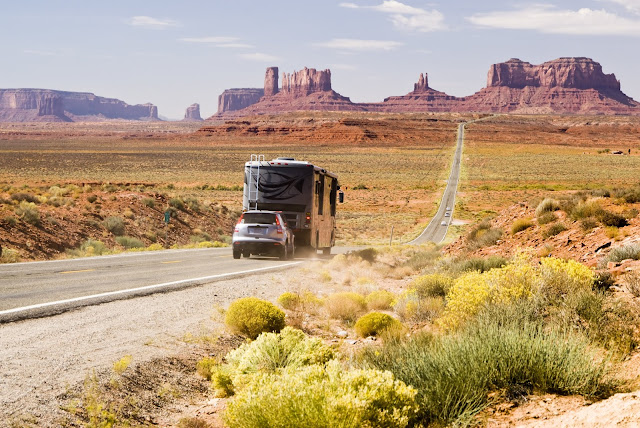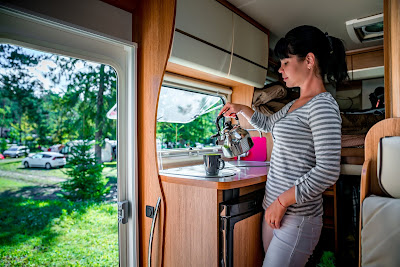What Can and Can’t I Tow with My RV?
What Can and Can’t I Tow with My RV?
Many RV owners discover early on that driving their RV or
motorhome isn’t practical once they arrive at a destination. Whether you want
to pop into town for some groceries, see a show in the city or simply go for a long
drive in the country without having to pull up stakes from your parking site,
towing a vehicle behind your RV may be the solution. There are restrictions,
however, on what you can and can’t tow. If you don’t pay attention to the
restrictions and guidelines on how to tow properly with your motorhome, you
could destroy the towed vehicle’s transmission, damage your RV or cause an
accident.
Can I Tow My Current Car?
In most cases, you can tow your car or SUV with your
motorhome. There may be exceptions or limitations based on the gross weight of
the towed vehicle or the maximum capacity of the hitch or dolly being used to
tow, so you need to read your owner’s manual carefully. You also need to
understand the type of transmission in your car so you know how to tow it
safely.
Flat Towing, Tow Bars or Tow Dollies
Using a tow bar or dolly or flat towing means towing your
vehicle with its own wheels on the road surface. In general, it’s easier to tow
this way if the vehicle has either 4WD that can be put in neutral or rear wheel
drive to protect the transmission. Flat towing leaves all four wheels on the
ground while tow dollies lift the front wheels off the ground and leave the
rear wheels touching the road. In either case, the transmission will be in use
and you will be racking up miles on your towed vehicle.
An automatic transmission will quickly burn out because the
wheels are turning but the transmission isn’t being lubricated unless you have
an expensive drive line disconnect or aftermarket lube pump installed, but this
will add thousands of dollars to the cost. It may be less expensive to trade
your current vehicle in for one that is more appropriate for flat towing.
Towing Using a Trailer
This is the most popular way to tow a car for a few reasons.
Most importantly, it’s the only safe way to tow a vehicle with an automatic
transmission. Loading your car onto a trailer means none of the wheels will
touch the road, the tires won’t turn and you won’t burn out your transmission.
It is, however, a bit more involved when you want to load and unload our
vehicle and the equipment is more expensive.
Things to Consider Before Towing
The most critical sources of information you need to consult
before deciding whether to tow and what to tow are your RV Owner’s Manual and
your Vehicle Owner’s Manual. Both of these will clearly indicate what you can
and can’t do in terms of towing. Things to consider include:
- Towed vehicle weight, including anything stored in the vehicle and fuel.
- Type of transmission.
- RV towing capacity.
- Hitch capacity.
- Type of hitch, tow bar or trailer being used.
- Total weight of the towed vehicle. Lots to consider here – a diesel engine is several hundred pounds heavier than a gasoline engine. Luxury details and optional extras can also add considerable weight to your car or SUV. Be sure you have an accurate weight before proceeding.
You also need to consider where you’ll be parking your RV.
In some RV parks, you will have to disconnect the trailer or hitch and store it
out of the way rather than leaving it attached to the back of your motorhome
where it will obstruct traffic flow and interfere with other campers.
If you are unsure whether you can tow the vehicle you
currently own or are considering buying, refer to your Owner’s Manual, weight
your vehicle and, if necessary, contact both your RV dealer and automobile
manufacturer for more information. Towing a vehicle gives your great
flexibility and convenience when traveling, but not doing it properly or
ignoring restrictions can lead to costly consequences.



Comments
Post a Comment